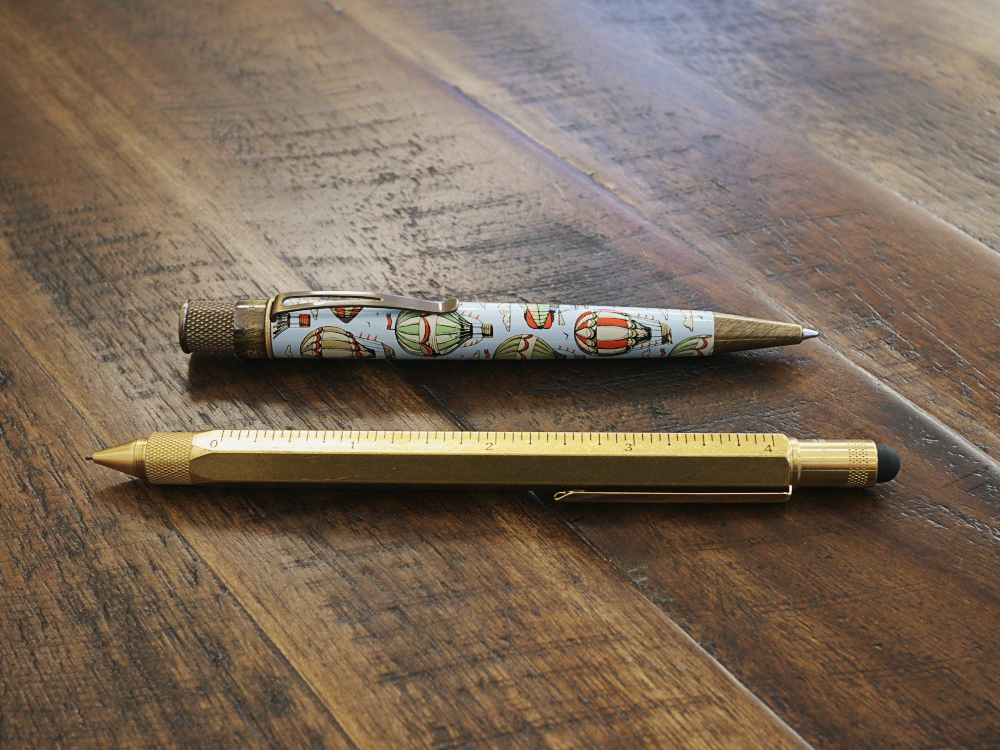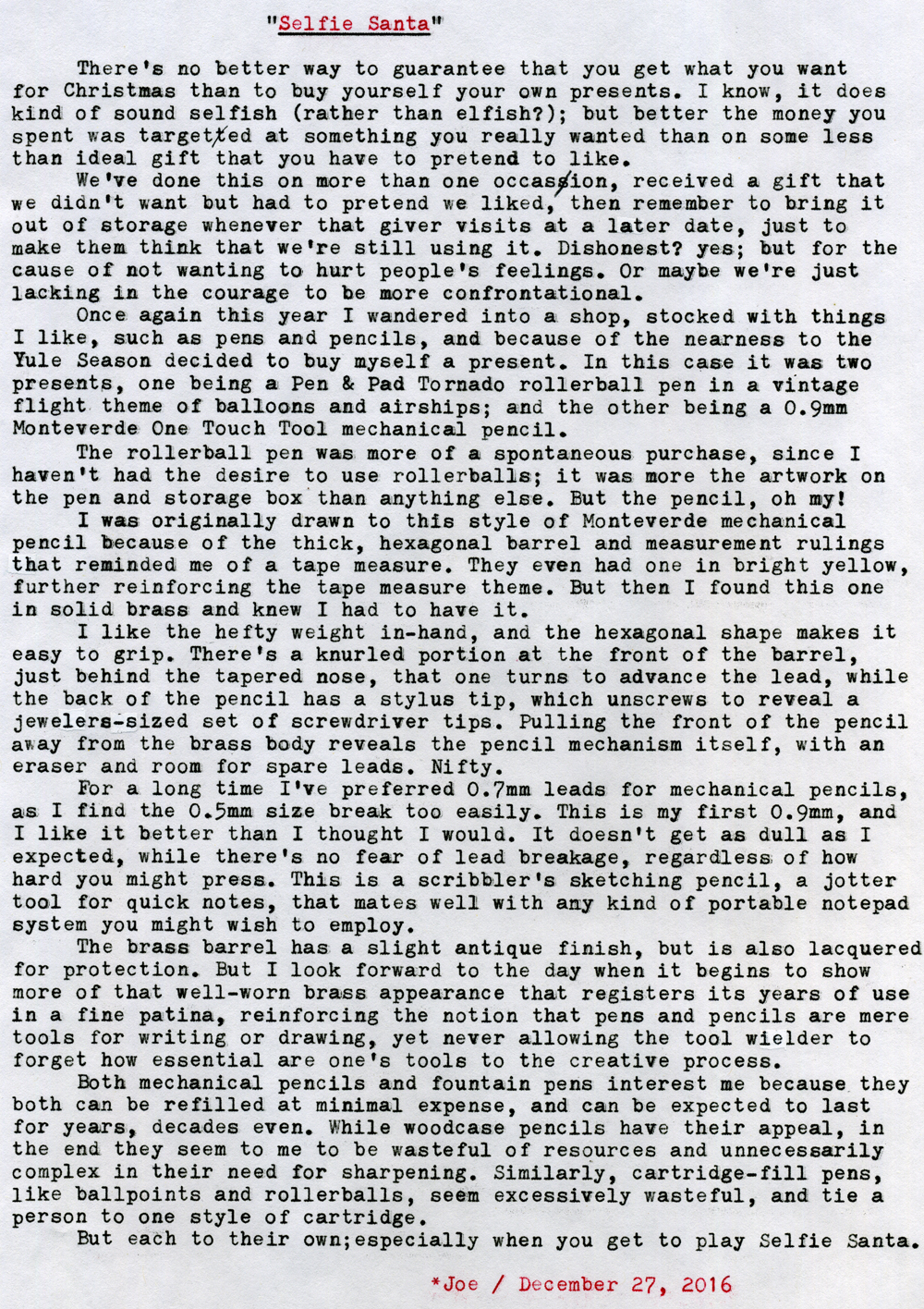Selfie Santa


Post-Script: In comparing fountain pens (specifically bottle-filled) and mechanical pencils with cartridge pens (like ballpoints, rollerballs and gel), I'm also reminded of the business model embodied by instant film, inkjet printer and shaving cartridges, where the money is made in refills, and also ties the consumer into a dependency upon a manufacturer's supply chain. I like the idea of a bottle of ink, that can be appropriated from most any supplier, lasting a great long while and able to work in most any fountain pen with suitable converter. Similarly with mechanical pencil refills. I was just at my local office supply retailer yesterday to buy more leads for the Monteverde brass pencil, and ended up with a small package comprising only five refill containers, each with 15 leads apiece, that's equivalent to, say, 75 woodcase pencils. And they had much larger packs of refills. I felt almost guilty for even considering purchasing a larger quantity, not knowing if I'd even still be alive by the time they ran out.
I like this idea of a pencil or pen being a tool that can last decades, with readily available refills.
Typecast via Webster XL-747. In case you haven't seen it, episode 49 of the Typewriter Video Series starred this pretty blue portable. In the video, I made mention of the end-of-line bell, that on this machine sounded more like a clunk than a chime. This morning I took the bottom of the machine off to inspect the bell mechanism. I'd expected an off-center mounting screw on the bell itself, like on many American-made machines, where the screw can be loosened and the bell's position readjusted. Not so on this Japanese-designed machine, where the linkages operating the bell, and the bell itself, are permanently mounted to a common bracket with no adjustment screws available. It turned out that the problem was the bell clapper arm was resting against the bell itself while at rest, such that when it was made to strike the bell it wouldn't let the bell freely resonate. I ended up "reforming" (i.e. bending) a small bracket on the other end of that clapper arm, such that while at rest the clapper is just shy of touching the bell. Now it makes a bright yet dainty chime at end-of-line.
I enjoyed using this machine for today's typecast. Yes, it has a heavier feel to the keys than some other portables. But the length of the key stroke is short, and the action snappy, making for a pleasing experience. Best of all is its reliability, and easy access to the escapement mechanism underneath, if need be; which I haven't needed.
Labels: beater typewriters, Brother, Lumix G5, mechanical pencils, retro tech, Santa swag, typewriter repair, Typewriter video series, Webster XL-747

3 Comments:
re: the slots in the back of the brother - I don't think they're for a case lid, because the hard plastic case lid uses a lip in the back that goes over the bottom of the machine. And yes, you can take a brother snap-on lid from another machine and snap it on a machine that came in a soft case. There's no special mounting cutouts. (:
Nice finds :)
Wouldn't you know it? After watching your tutorial on the Webster XL-747, I came across the same model today at an antique store in Olympia, Wash. It came down to either a Hermes Rocket for $165 or the Webster for $85. I felt like I already knew the Webster so I bought it, complete with identical case. Everything checked out as you explained in your video. All I need is a new ribbon and I'm in business.
Post a Comment
<< Home